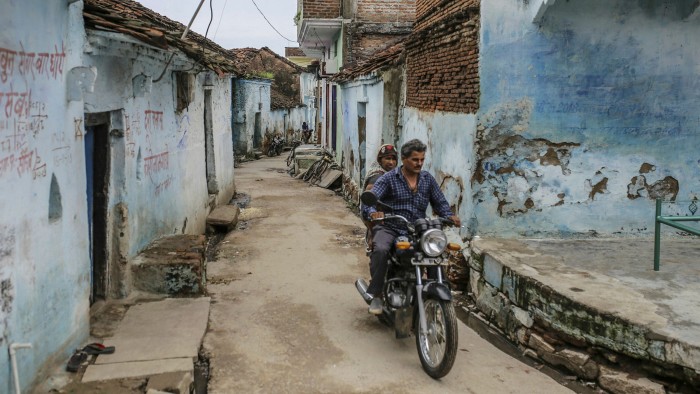Investors bet on the resilience of India’s rural economy


Roula Khalaf, Editor of the FT, selects her favourite stories in this weekly newsletter.
India has been among the countries hardest hit by coronavirus pandemic with more than 7.5m cases recorded, second only to the US. The country is looking at a 10 per cent economic contraction this year, according to the IMF, dealing a deep blow to the country’s already weakened financial system.
This has unnerved investors who had bet on the future prospects of a fast-growing, urbanising emerging market giant. Metropolises like Mumbai or New Delhi has been overwhelmed by the virus, the urban middle-class gutted by job losses and millions of migrant workers have abandoned cities altogether.
Out of this bleak picture, however, the resilience of India’s overlooked hinterland has come to the fore. Home to more than half of the 1.4bn population, rural India has for years struggled with low agricultural productivity and under-investment. But, since the pandemic hit, India’s heartland economy has outshone urban areas thanks to everything from a good crop season to government stimulus.
The hope that rural India will lead the country’s economic and corporate recovery has spawned what has now become a popular investment theme, with stockpickers and traders seeking out companies poised to thrive with this rural revival.
These have ranged from candidates with direct ties to agriculture, such as tractor makers Mahindra & Mahindra and Escorts, which have reported strong sales. Their share prices have more than doubled from lows in March, when India first went into lockdown, outpacing the 50 per cent growth in the benchmark Nifty 50 index.
The rural halo has also extended to two-wheeler makers like Hero Motocorp, India’s largest, which has reported strong rural demand for its affordable motorcycles and scooters. Fast-moving consumer goods companies like Hindustan Unilever or Britannia, which thrive on selling cheap snacks or sachets of shampoo in rural markets, have also benefited.
“The rural and semiurban parts of India are leading the charge,” Niranjan Gupta, Hero’s chief financial officer, said in August. Hero’s share price is up 115 per cent since March.
This trend is reinforced by data showing everything from a good monsoon rains to rural wages and employment. The government has provided a record number of jobs under its National Rural Employment Guarantee Act, which provides a minimum 100 days of work per year to informal labourers.
Data points like these “are clearly tell-tale signs that rural India is leading the recovery”, said Lakshmi Iyer of fixed income and head of products at Kotak Mutual Fund. Ms Iyer said she has been rejigging her portfolios to capture this rural rebound, from building positions with speciality chemical makers to consumer goods businesses.
These signs of a rural turnround are encouraging. Yet investors should still treat this rural revival narrative with caution. A bountiful crop will certainly help boost purchases of motorcycles or even gold, a favoured form of investment in rural areas.
But, put simply, better rains or government stimulus will not change the structural factors that have long held back rural India, such as low productivity and under-developed services.
“None of these are things that fundamentally alter demand patterns,” says Aditya Narain of Edelweiss Financial Services. Mr Narain believes there needs to be much more of a structural shift in demand for stock prices to go up from here.
The government recently moved ahead with politically controversial reforms to liberalise the trade for farm goods. Though they are expected to have long-term benefits in opening up India’s agricultural commodity markets, these will take time.
The hard truth for now is that in the months to come, many of the millions of migrants who left India’s cities for their villages during the lockdown are expected to return to urban India — having failed to find opportunities in the farm lands.
This could in turn serve to drain rural areas of a chunk of the demand to which investors have reacted. The virus itself is complicating matters too, having spread into rural areas with less testing capacity and weaker healthcare infrastructure.
“We don’t know what’s happening in the rural areas as far as Covid goes,” says Shumita Deveshwar, a senior director at research firm TS Lombard. She argues much more needs to be done to rebalance India’s rural-urban divide. “We need a strong economy for the rural sector to be strong,” she says. “I just don’t see how sustainable this particular rural revival is going to be.”
Benjamin.Parkin@ft.com
Comments